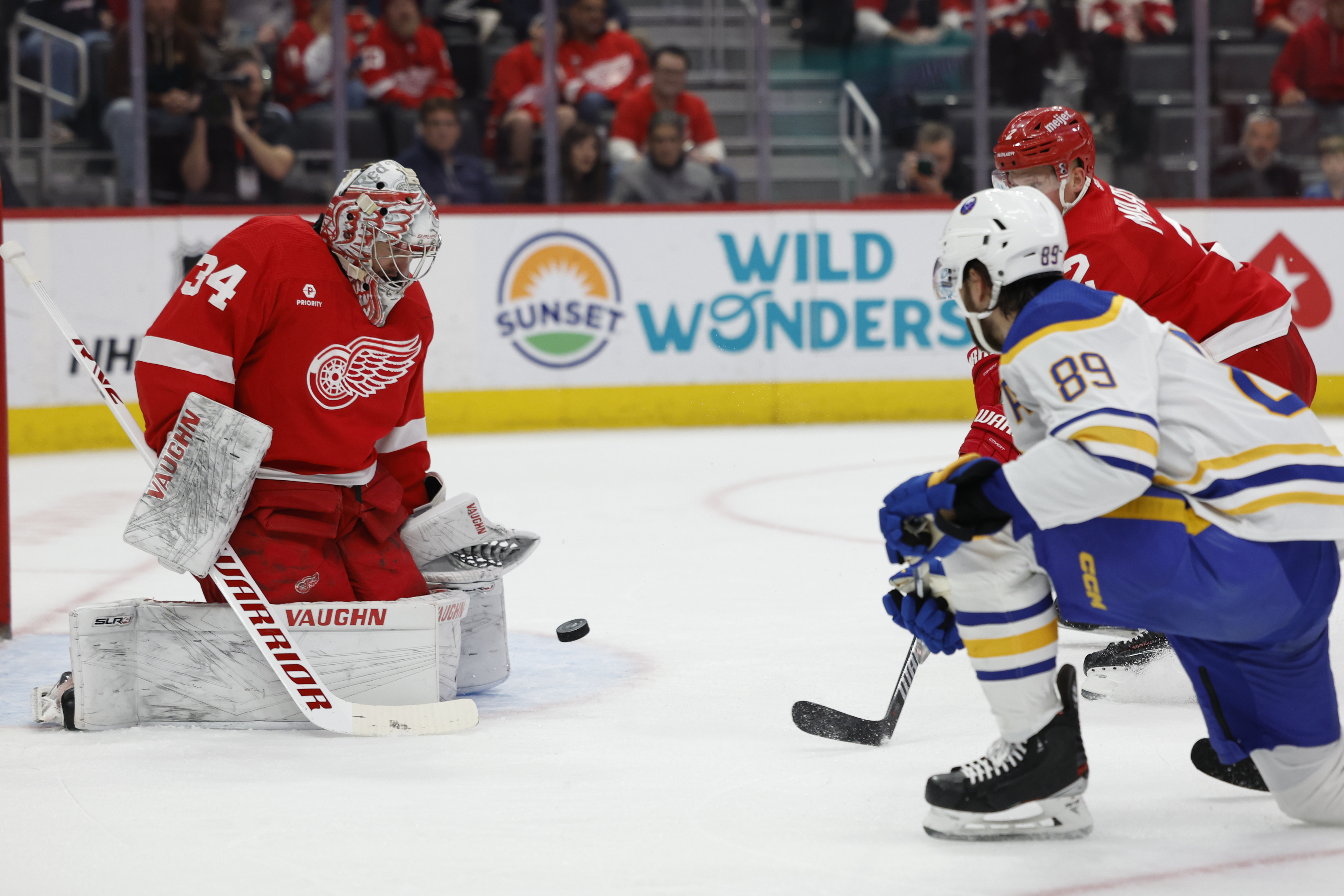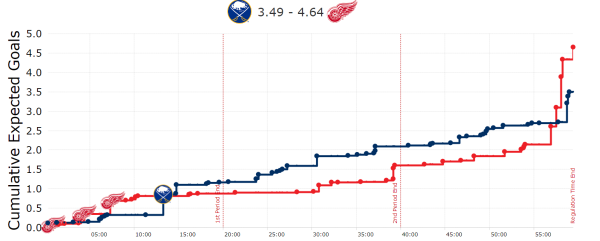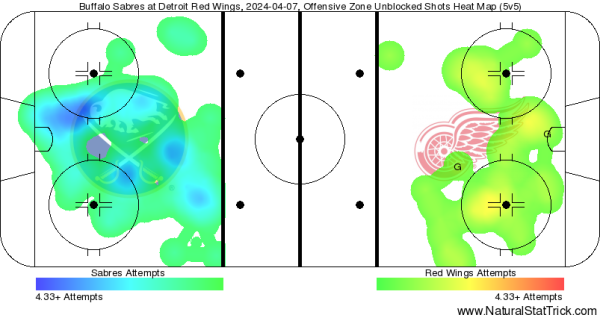
A Statistical Review of the Red Wings’ 3-1 win over the Buffalo Sabres, with a focus on the effectiveness of the Copp-Compher-Fischer line and the stellar play of Alex Lyon
A Statistical Review of the Red Wings’ 3-1 win over the Buffalo Sabres, with a focus on the effectiveness of the Copp-Compher-Fischer line and the stellar play of Alex Lyon

The Red Wings needed a win Sunday against Buffalo, and they put themselves on pact for one right from the opening shift.
With one of the best starts in recent games, Detroit took a commanding 3-0 lead eight minutes into the game that it nursed to a 3-1 win. It weathered an aggressive Buffalo attack, holding its stars scoreless at even strength. All that compounded for a win that put the Red Wings in a playoff spot during this close playoff race.
In today’s statistical review, let’s look at how they did it.
The Big Picture
This is one of those games where looking at overall statistics will tell you that Detroit shouldn’t have won this game. They were thumped 67-37 in shot attempts and 38-24 in total shots. Until a last minute flurry of near-miss empty-net goals, the Red Wings trailed 2.698-2.145 in expected goals as tracked by Moneypuck. Buffalo controlled the run of play from the second period onward.

But in parking the bus, so to speak, Detroit played for the win and not the score. Its three early goals put it in the driver’s seat, and it didn’t take its hands off the steering wheel even if its foot slipped off the gas.
In terms of shot location, the Sabres took a lot of attempts on the left side of goaltender Alex Lyon. The Red Wings generally defended the slot, allowing Buffalo to shoot from sharper angles or with longer shots that were easier to turn aside.

Overall, this defensive effort was as imperfect as it was impactful. It gave up chances, but it didn’t give up goals. Ultimately, the latter won them the game.
Individual Impacts
The last time the Red Wings took on the Sabres, they earned a 4-1 home win in large part thanks to the high-impact checking of the Michael Rasmussen, Andrew Copp and Christian Fischer third line. It locked down the Sabres’ first line run by Tage Thompson and Alex Tuch. But Rasmussen has been out the past couple games with an upper body injury, so Detroit had to improvise.
Moving J.T. Compher to play with Copp and Fischer, he created the same type of checking presence. While the line didn’t entirely clamp Thompson and the gang — the line attempted 23 shots — it held it scoreless at 5-on-5. Thompson did score the Sabres’ lone power play tally, but it wasn’t enough to win. In this matchup — used more like a second line — the trio wasn’t productive on offense, but it weathered the brunt of its defensive responsibilities admirably. This line’s task wasn’t to go out and score. Its task was to defend, and everything else came second.
The Red Wings’ first and third lines played a pretty even game, with decimal-point leads in expected goal generation and a Corsi percentage within arms reach of 50% on either side. This included a third line with Austin Czarnik at center for Patrick Kane and Alex DeBrincat, a move that freed up Compher to play on that impact second line. With such a good outing overall from the new-look lines, Lalonde said he plans to keep this lineup in place for the game against Washington this Tuesday.
On the back end, Ben Chiarot and Moritz Seider were deployed for the bulk of the shots and chances that the Red Wings faced. With a 33-6 deficit in shot attempts against across 18:31 of play, the duo had a busy afternoon against the Sabres but allowed no scoring at even strength. Seider’s career-high 10 blocked shots helped dampen the number of those chances that goaltender Alex Lyon had to stop.
While Chiarot and Seider shouldered a lot of the defensive work, Simon Edvinsson and Jeff Petry had a much lighter night. It rarely faced that potent Thompson line, instead working against the Sabres’ middle six. The pairing largely won that matchup, outchancing Buffalo 16-12 in shot attempts and taking a 0.597-0.264 lead in expected goals.
In net, Alex Lyon earned praise from teammates and coaches after the game, and he deserved every word of it. He let in one high-danger power play chance — one of four high-dangers he faced in the game. Overall, he stopped 37 of the 38 shots he faced, the majority of which were low-danger chances. His 2.49 goals saved above expected is the statistical way to say he played an integral role in Detroit winning this game.
In a season view, the outing tied a late November win over Minnesota for his highest non-shutout save percentage of the season. In his third time in four games facing 38 shots, he played a stellar game.
Also from THN Detroit
The Red Wings’ Next Two Games are their Biggest of the Season; Here’s How they Can Win Them
Red Wings Seize Opportunity with Fast Start in 3-1 Win over Buffalo
Husso: "It's Been a Long Road, but I Feel Good Now"
In Loss to Rangers, Red Wings Lack Control Despite Close Finish
New York's Bottom Six Haunts Detroit: Red Wings-Rangers Statistical Review
